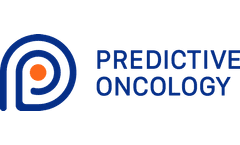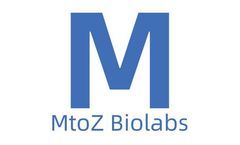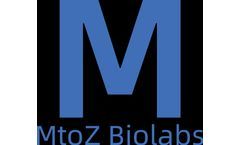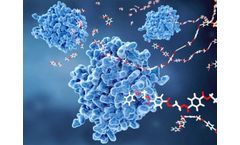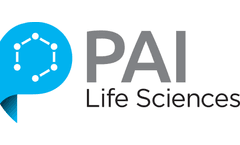Drug Treatment Articles & Analysis
52 articles found
Many oncology drugs have been abandoned by pharmaceutical companies due to poor performance in phase I, II, or III clinical trials. These drugs represent untapped potential treatments for indications outside of those initially investigated. With research and development costs for a single new drug estimated between $2–3 ...
This can help researchers distinguish between biological variation and technical errors.Clinical ResearchIn clinical research, such as studying DNA methylation patterns under a certain disease state, more parallel samples (such as 5 or more) may be needed to better capture biological variability under disease status.Drug Response ResearchIn studying individual differences in drug ...
This test is commonly used to monitor a patient's immune response to biological agents or other drugs, especially in the treatment of chronic diseases such as autoimmune diseases, certain cancers, and inflammatory diseases. ...
Researchers are still investigating strategies to overcome this barrier, similar to the use of nanoparticles or other drug delivery systems to increase drug penetration. They hope to improve the effectiveness of treatments for brain tumor by developing drugs that can effectively cross the blood-brain barrier. In addition, several ...
Imagine a team of highly trained engineers, each one assigned to a particular task - one expertly assembles car parts, another efficiently refines oil, and yet another skillfully synthesizes life-saving drugs. This is the essence of enzymes, working tirelessly to power the processes that sustain life. ...
In SN38-BSA bioconjugate, a type of bioconjugate called a protein-drug conjugate is created. Here, the drug (SN38) is directly linked to BSA. This direct linkage ensures minimal disruption in drug delivery leading to better treatment outcomes. The characteristics of each component in the bioconjugate, SN38 and BSA, prove ...
Introduction Chemotherapy with anti-tumor agents is currently one of the most important systemic treatments for cancer. However, direct treatment with drugs lacks specificity and sensitivity and tends to attack normal cells indiscriminately, resulting in side effects. ...
Uses of Recombinant Human Collagen Due to its good biocompatibility, low immunogenicity, stabilized property, recombinant human collagen has been widely used in tissue engineering (such as vascular scaffolds engineering, cartilage, bone defect repair), skin injury treatment, drug delivery, etc. [1]. Tissue engineering The production of recombinant human collagen ...
Especially in terms of dosage, since its therapeutic effect can reach 100-1000 times that of ordinary antibodies, the dosage can be as low as 1/2000 of the original, significantly reducing the cost of drug treatment. Relative to combination therapy, the cost of bispecific antibodies is also much lower than that of two single-agent combination therapies. ...
Studies into the degradation mechanism of GlueTACs revealed that treatment with Chloroquine/Bafilomycin significantly reduced PD-L1 degradation, whereas MG132 treatment did not, suggesting that the degradation process depends on the endolysosome pathway. ...
This analysis enables us to pinpoint genes that play pivotal roles in phenotypic variation, disease development, or response to treatments. With RNA-seq, we can capture and quantify the abundance of transcripts, revealing the dynamic landscape of gene expression within a cell or tissue. ...
In the pharmaceutical sector, this science has paved the way for the creation of bespoke enzymes that craft complex drug molecules with precision, minimizing side effects and maximizing therapeutic outcomes. ...
Minoxidil was first introduced by Upjohn Company of the United States, and was first used as an oral drug for the treatment of refractory hypertension in the 1970s. In later clinical applications, doctors observed hair regrowth and generalized excessive hair in balding patients, which led to the development of minoxidil preparations. Minoxidil can increase local ...
The global age-standardized prevalence of type 1 diabetes is projected to increase by 23.9%, from 0.2% in 2021 to 0.3% in 2050. 3. Diabetes Treatment And Prevention Type 1 diabetes is treated with insulin injections. ...
In addition to being used as an auxiliary marker, MMP-3 can also serve as a prognostic monitoring marker and be used to assess the efficacy of drug treatments. A comparison was conducted between the serum MMP-3 levels of 45 RA patients and 20 healthy individuals undergoing physical examinations. The serum MMP-3 levels of RA patients in the active phase before ...
This analysis allows us to pinpoint genes that play crucial roles in phenotypic variation, disease development, or response to treatments. With RNA-seq, we can capture and quantify the abundance of transcripts, providing insights into the dynamic landscape of gene expression within a cell or tissue. ...
The GLP-1 analogues have established themselves in the past years as one of the superior drug classes for treatment of diabetes type II in terms of blood glucose lowering and weight loss. Because of the latter, they are being used more and more also in the treatment of obesity. Until now, both drugs are only available by ...
Bortezomib is the first proteasome inhibitor and the first-line drug for multiple myeloma, which has made a breakthrough in the treatment of multiple myeloma. Due to its strong drug resistance and people's resistance to it Continuous research on drug mechanism, carfilzomib was approved by the FDA as the second proteasome ...
Current schistosomiasis control strategies are geared toward repeated treatment with praziquantel, a drug discovered in the 1970s. Dependence on the drug therapy approach alone is inadequate in the short term because this strategy has had little impact on the reduction of disease transmission and infection rates continue to be high. There is ...
The CRISPR/Cas9 system is essentially a bacterial defense mechanism against foreign DNA. At present, AD treatment methods mainly include physical, drug and psychotherapy. Although there is still no specific drug for AD treatment. However, clinical data show that some drugs have significant effects on the ...

